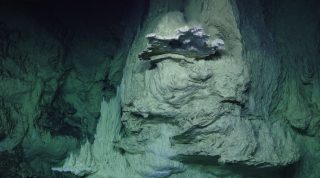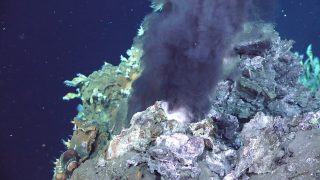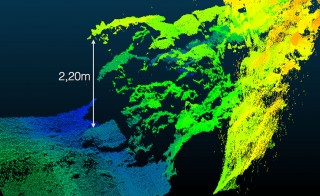2023 – The Return of the Luck Dragon
In Search of Hydrothermal Lost Cities
Mid-Atlantic Ridge
March
On its inaugural expedition, Falkor (too) will head to the Mid-Atlantic Ridge. In 2000, scientists found a hydrothermal vent system on the Atlantis Massif unlike any seen before. Ghostly towers made of limestone sprang from the seafloor, spewing clear liquid, and very few creatures dwelled among the vents. When the scientists sampled the chemistry, they found it vastly different from black smoker vents on the nearby Mid-Atlantic Ridge volcanoes. The scientists named the new alkaline vent system “Lost City.” Since 2000, scientists have discovered only a few other vents like Lost City and none that rival the size of the original. During this expedition, the team will search for more vent fields like Lost City — alkaline vents created by serpentinization. Finding them is imperative to science, as their chemical makeup is suspected to be closest to the conditions that facilitated life’s origin on our planet. The microbes living in these depths may provide insight into the circumstances that facilitated the beginning of life on Earth—and possibly other planets.
Health Diagnostics of Deep-Sea Coral
Puerto Rico, USA
April
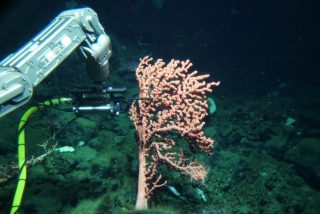 Reactive Oxygen Species (ROS) are chemical compounds all living organisms, spanning bacteria to humans, create throughout the day. Organisms, including animals, produce ROS through chemical reactions within and outside cells in the body. These chemicals are essential for the function and health of animals as they are needed for breaking down food, fighting off diseases, and healing wounds. The team is interested in the role of ROS in the function and health of corals, especially amongst mesophotic and deep-sea corals, and will be testing new technology to measure such chemical compounds. Widespread mesophotic and deep-sea coral gardens grow in the deep sea surrounding Puerto Rico. The teams aim to study the corals here and establish a baseline for the health of these ecosystems. To do this, the team will conduct visual surveys in protected and non-protected areas. Additionally, they will use novel technology to determine the physiological health of these organisms by measuring the amount of ROS produced by the corals and how this relates to other ecological and physiological characteristics of the corals.
Reactive Oxygen Species (ROS) are chemical compounds all living organisms, spanning bacteria to humans, create throughout the day. Organisms, including animals, produce ROS through chemical reactions within and outside cells in the body. These chemicals are essential for the function and health of animals as they are needed for breaking down food, fighting off diseases, and healing wounds. The team is interested in the role of ROS in the function and health of corals, especially amongst mesophotic and deep-sea corals, and will be testing new technology to measure such chemical compounds. Widespread mesophotic and deep-sea coral gardens grow in the deep sea surrounding Puerto Rico. The teams aim to study the corals here and establish a baseline for the health of these ecosystems. To do this, the team will conduct visual surveys in protected and non-protected areas. Additionally, they will use novel technology to determine the physiological health of these organisms by measuring the amount of ROS produced by the corals and how this relates to other ecological and physiological characteristics of the corals.
Octopus Odyssey
Costa Rica
June
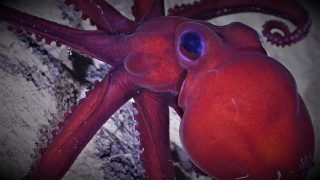 The aim of this expedition is to investigate the biodiversity of unprotected seamounts in an under-explored region in Costa Rica. The team’s primary target is the Dorado Outcrop, where an “Octopus Garden” was first discovered in 2013. On this small outcrop the size of a soccer field, an estimated one hundred female octopuses are brooding their eggs together along low-temperature vents, a phenomenon scientists had never seen before. The science team’s goal is to better understand the hydrogeology, microbiology, ecology, and geochemistry that may facilitate this fascinating behavior while also characterizing life-supporting services provided by the ecosystems on these seamounts. Alongside documenting the octopus, researchers plan on examining the microbial communities at these sites to see if there are symbiotic relationships between the microbes and octopuses. Scientists know little about the microbial communities hosted within deep-sea octopuses. The team will examine if the microbes emitted from low-temperature vents are essential to the health of the octopus and any eggs that hatch.
The aim of this expedition is to investigate the biodiversity of unprotected seamounts in an under-explored region in Costa Rica. The team’s primary target is the Dorado Outcrop, where an “Octopus Garden” was first discovered in 2013. On this small outcrop the size of a soccer field, an estimated one hundred female octopuses are brooding their eggs together along low-temperature vents, a phenomenon scientists had never seen before. The science team’s goal is to better understand the hydrogeology, microbiology, ecology, and geochemistry that may facilitate this fascinating behavior while also characterizing life-supporting services provided by the ecosystems on these seamounts. Alongside documenting the octopus, researchers plan on examining the microbial communities at these sites to see if there are symbiotic relationships between the microbes and octopuses. Scientists know little about the microbial communities hosted within deep-sea octopuses. The team will examine if the microbes emitted from low-temperature vents are essential to the health of the octopus and any eggs that hatch.
The Underworld of Hydrothermal Vents
East Pacific Rise
Hydrothermal vents are dynamic ecosystems prone to regular disturbances like volcanic eruptions and earthquakes. Some hydrothermal vents have brief lifespans, yet, wherever a hydrothermal vent forms, a biological community almost always follows, and how these animals arrive is yet to be determined. This team suspects the mechanism for building new hydrothermal vent ecosystems exists beneath the seafloor. The team hypothesizes that a teeming community of bacteria, fungi, and animal larvae thrive and travel underneath hydrothermal vents. To research if the subseafloor ecosystem spreads animal larva and microbial communities between vent fields, the team will voyage to the East Pacific Rise, and study life beneath the vents to determine the drivers for how hydrothermal vent communities form.
Dynamics of Sinking Microplastics
Panama
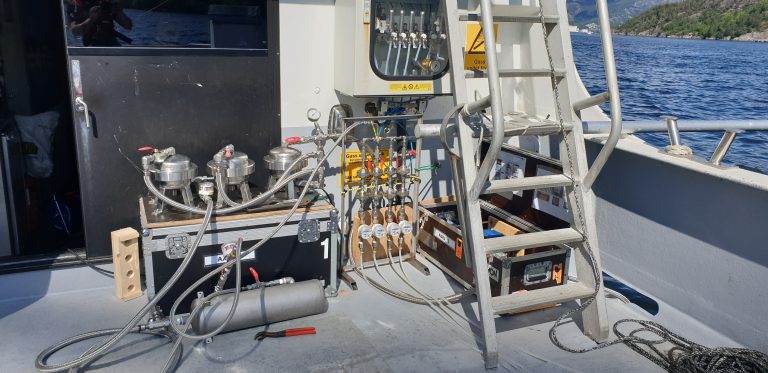
Microplastics are found throughout the entire Ocean, so studying them in the first few meters of water depth is, quite literally, just scratching the surface. To assess the presence of microplastics in the entire water column, Chief Scientist Laura Simon Sanchez, a National Geographic Explorer, and her team will go beyond the surface to study microplastics’ vertical distribution and movement from the surface to the seafloor. The trajectory of microplastic to the seafloor is a crucial, but underexplored, component of their global impact. What happens when microplastics eventually sink? What types of microplastics are in the water column, and where are they located? To answer these questions, the team will execute an ambitious sampling plan from Panama’s coast to the deep Ocean that utilizes an in-situ sampler called the McLane Pump and a filtration system aptly named UFO.
Hydrothermal Vents of the Galápagos
Western Galápagos Spreading Center
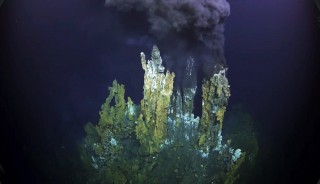 In 1977, scientists at the Eastern Galápagos Spreading Center uncovered an ecosystem that changed our conception of life—hydrothermal vents. In the crushing darkness of the deep sea, life thrives on these vents as bacteria facilitate a whole food web by converting chemicals, rather than sunlight, into energy. Hydrothermal vents threw open the door to new scientific possibilities and have been found and explored across the Ocean for decades. Now, Chief Scientist Roxanne Beinart and her team will voyage to the Galápagos, not to revisit the original discovery site, but to uncover the mysteries of unexplored hydrothermal vents at the Western Galápagos Spreading Center. Each dive will be an opportunity to study a site’s unique chemistry, geology, and biology—revealing variations from nearby vents on the Eastern Spreading Center and across the eastern Pacific.
In 1977, scientists at the Eastern Galápagos Spreading Center uncovered an ecosystem that changed our conception of life—hydrothermal vents. In the crushing darkness of the deep sea, life thrives on these vents as bacteria facilitate a whole food web by converting chemicals, rather than sunlight, into energy. Hydrothermal vents threw open the door to new scientific possibilities and have been found and explored across the Ocean for decades. Now, Chief Scientist Roxanne Beinart and her team will voyage to the Galápagos, not to revisit the original discovery site, but to uncover the mysteries of unexplored hydrothermal vents at the Western Galápagos Spreading Center. Each dive will be an opportunity to study a site’s unique chemistry, geology, and biology—revealing variations from nearby vents on the Eastern Spreading Center and across the eastern Pacific.
Vertical Reefs of the Galápagos
Galápagos Islands, Equador
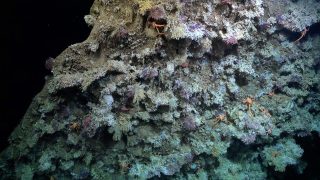 The Galápagos Islands are home to a dazzling array of cold-water corals. While they are understudied compared to the shallow-water corals, a subset of these deep-dwelling animals is even more shrouded in mystery—cold-water corals living on cliffs. The depth and inaccessibility of vertical corals to ship-based sensors present significant hurdles to studying these creatures. Chief Scientist Katleen Robert and her multidisciplinary team will overcome these challenges to map and characterize this extraordinary ecosystem while defining its environmental drivers. The team will deploy a number of advanced technologies, including a laser scanner that will create an ultra-high resolution three-dimensional reconstruction of vertical cold-water coral reefs. As the Galápagos Islands are a protected area with little human impact, its cliff-dwelling coral reefs likely represent these ecosystems in their pristine condition and can serve as a baseline for understanding change.
The Galápagos Islands are home to a dazzling array of cold-water corals. While they are understudied compared to the shallow-water corals, a subset of these deep-dwelling animals is even more shrouded in mystery—cold-water corals living on cliffs. The depth and inaccessibility of vertical corals to ship-based sensors present significant hurdles to studying these creatures. Chief Scientist Katleen Robert and her multidisciplinary team will overcome these challenges to map and characterize this extraordinary ecosystem while defining its environmental drivers. The team will deploy a number of advanced technologies, including a laser scanner that will create an ultra-high resolution three-dimensional reconstruction of vertical cold-water coral reefs. As the Galápagos Islands are a protected area with little human impact, its cliff-dwelling coral reefs likely represent these ecosystems in their pristine condition and can serve as a baseline for understanding change.
Ultra Fine Scale Seafloor Mapping
Mapping the seafloor in detail is one of the biggest challenges still facing the field of oceanography. Water obscures undersea volcanoes, cliffsides, plateaus, and plains—hiding them from the human eye. On this expedition, the team will test the capabilities of a technology new to scientific seafloor mapping: Interferometric Synthetic Aperture Sonar (InSAS). InSAS can create acoustic images (pictures made with sound instead of light) of the seafloor at resolutions so detailed they depict animals living on the rocks. This technology can concurrently create sub-meter resolution topographic maps of the seafloor. For comparison, multibeam sonar, the tool typically used in seafloor mapping, creates maps with 50 meters of resolution. The team will test the potential of this technology as a revolutionary tool for better understanding the ocean floor.
OCTOPUS ODYSSEY (TOO)
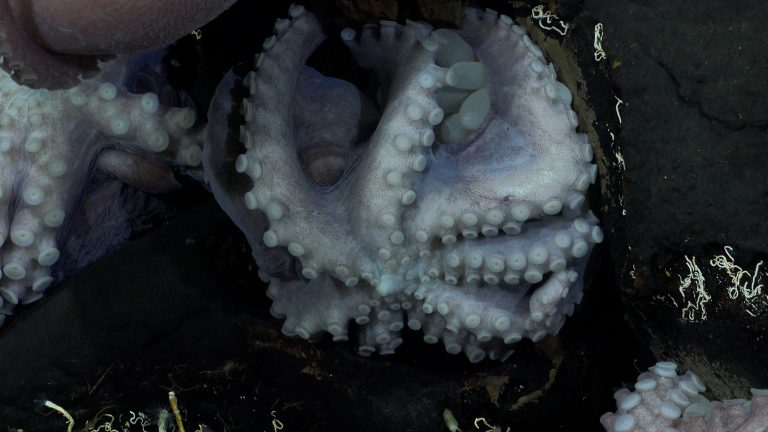 In June of 2023, Co-chief Scientists Dr. Beth Orcutt of the Bigelow Laboratory for Ocean Sciences (USA) and Dr. Jorge Cortés of the Universidad de Costa Rica and an international team traveled to the Dorado Outcrop– Earth’s first-ever-discovered octopus nursery. One of their goals was to determine if the eggs at the nursery were viable, as past expeditions to the outcrop had never seen evidence of developing embryos. On their first ROV dive at the nursery, they witnessed baby octopus hatching. They also found the fifth known octopus nursery in the world on a seamount 30 nautical miles away. The team returns to continue their research, collect experiments they placed earlier in the year, and examine new regions never-before-seen by humans. The science team’s ultimate goal is to better understand the hydrogeology, microbiology, ecology, and geochemistry that may facilitate octopus nurseries while characterizing life-supporting services provided by the ecosystems on these seamounts.
In June of 2023, Co-chief Scientists Dr. Beth Orcutt of the Bigelow Laboratory for Ocean Sciences (USA) and Dr. Jorge Cortés of the Universidad de Costa Rica and an international team traveled to the Dorado Outcrop– Earth’s first-ever-discovered octopus nursery. One of their goals was to determine if the eggs at the nursery were viable, as past expeditions to the outcrop had never seen evidence of developing embryos. On their first ROV dive at the nursery, they witnessed baby octopus hatching. They also found the fifth known octopus nursery in the world on a seamount 30 nautical miles away. The team returns to continue their research, collect experiments they placed earlier in the year, and examine new regions never-before-seen by humans. The science team’s ultimate goal is to better understand the hydrogeology, microbiology, ecology, and geochemistry that may facilitate octopus nurseries while characterizing life-supporting services provided by the ecosystems on these seamounts.
